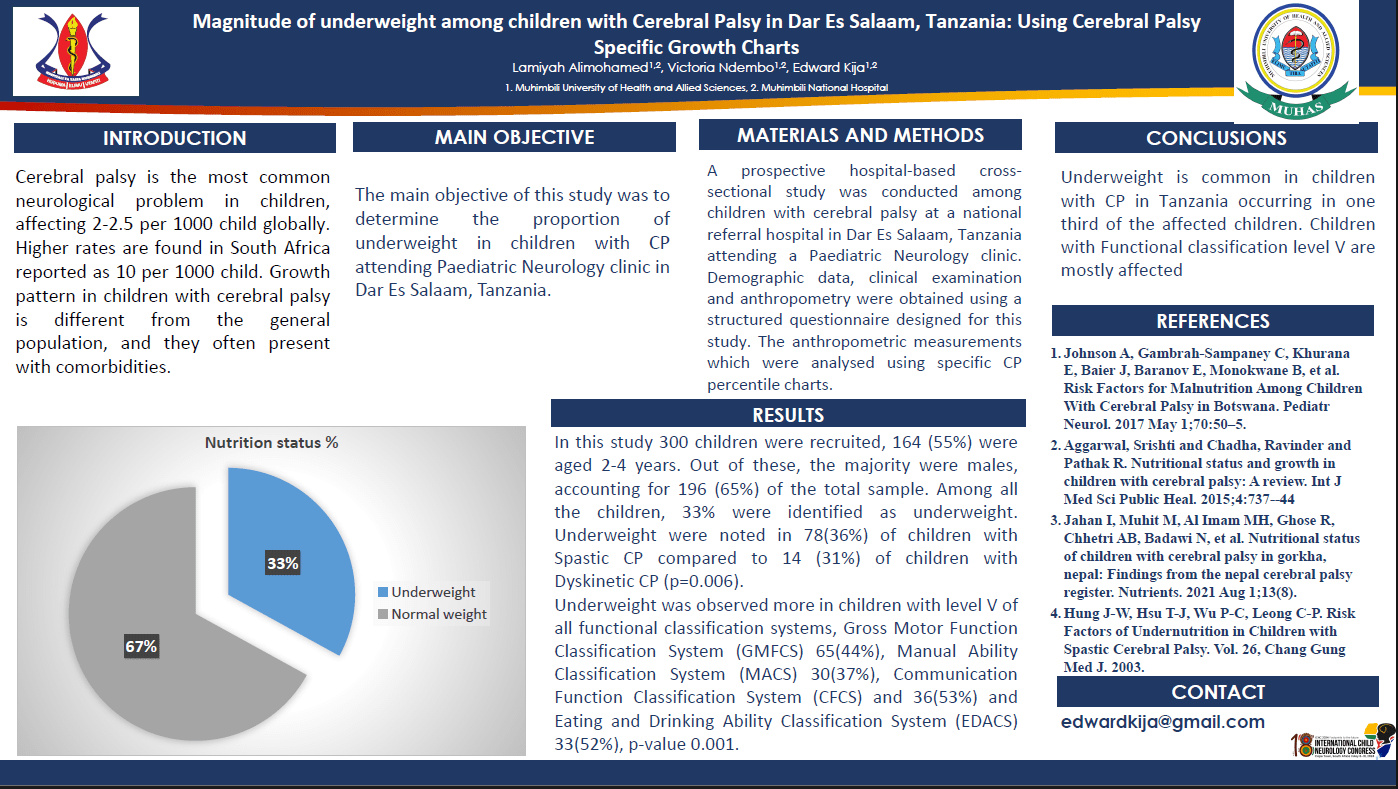Magnitude Of Underweight Among Children With Cerebral Palsy In Dar Es Salaam, Tanzania: Using Cerebral Palsy Specific Gr
INTRODUCTION: Cerebral palsy is the most common neurological problem in children, affecting 2-2.5 per 1000 child globally. Growth pattern in children with cerebral palsy is different from the general population, and they often present with comorbidities. METHODOLOGY: A prospective hospital-based cross- sectional study was conducted among children with cerebral palsy at a national referral hospital in Dar Es Salaam, Tanzania attending a Paediatric Neurology clinic to determine the proportion of underweight in children with CP. Demographic data, clinical examination and anthropometry were obtained using a structured questionnaire designed for this study. The anthropometric measurements which were analysed using specific CP percentile charts. RESULTS: In this study 300 children were recruited, 164 (55%) were aged 2-4 years. Out of these, the majority were males, accounting for 196 (65%) of the total sample. Among all the children, 33% were identified as underweight. Underweight were noted in 78(36%) of children with Spastic CP compared to 14 (31%) of children with Dyskinetic CP (p=0.006). Underweight was observed more in children with level V of all functional classification systems, Gross Motor Function Classification System (GMFCS) 65(44%), Manual Ability Classification System (MACS) 30(37%), Communication Function Classification System (CFCS) and 36(53%) and Eating and Drinking Ability Classification System (EDACS) 33(52%), p-value 0.001. CONCLUSION: Underweight is common in children with CP in Tanzania occurring in one third of the affected children. Children with Functional classification level V are mostly affected. RECOMMENDATIONS: Nutritional assessment should be conducted in all children with CP with appropriate intervention and counselling.
Lamiyah Alimohamed
Muhimbili university of Health and Allied Sciences
Tanzania
Victoria Ndembo
Muhimbili National Hospital
Tanzania
Edward Kija
Muhimbili University of Health and Allied Sciences
Tanzania

Victoria Ndembo
Muhimbili National Hospital
Tanzania